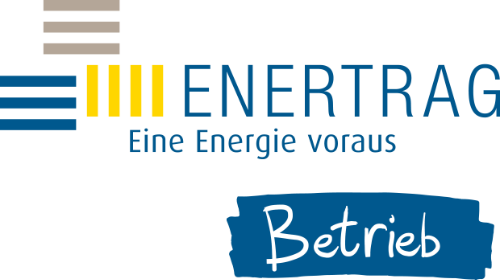As an operator of wind turbines, you are faced with the complex task of implementing efficient and safe solutions for airspace surveillance. Radar systems play a central role in Aircraft Detection Lighting Systems (ADLS) and the general safety of your turbines. Immerse yourself in the world of passive and active radar systems and discover their crucial importance for your wind farm.
Active radars form the backbone of conventional airspace surveillance and have been tried and tested for decades:
How they work:
- Emission: Actively emit high-frequency electromagnetic signals, typically in the gigahertz range
- Reflection: These signals are reflected by objects in the airspace
- Detection: A sensitive receiver detects the reflected signals
- Analysis: Complex algorithms process the received data
Measured variables:
- Distance: Calculation via the transit time of the signal
- Speed: Determined using the Doppler effect
- Direction: Determined by the orientation of the radar antenna
- Size: Estimation based on the signal strength of the echo
Technical specifications:
- Frequency ranges: Typically 1-40 GHz, depending on the application
- Range: Up to several hundred kilometers possible
- Resolution: In the meter range, depending on the signal bandwidth
For your wind farm, the use of active radar systems means
- Precise detection of approaching aircraft, even smaller aircraft
- Reliable activation of obstruction lighting when actually required
- High detection rate even in difficult weather conditions such as fog or heavy rain
- Can be integrated into higher-level airspace surveillance systems
Passive radars represent an innovative and forward-looking approach to airspace surveillance:
Operating principle:
- Reception: Use existing electromagnetic signals from the environment
- Signal sources: e.g. radio, television, mobile radio or even satellite navigation systems
- Detection: Analyze interference or changes in these signals
- Triangulation: Determine the position of objects by comparing the signals at different receiving stations
Special technical features:
- Multistatic setup: Use of multiple, spatially separated receivers
- Signal processing: Highly complex algorithms for real-time analysis of signal changes
- Frequency ranges: Utilization of a broad spectrum, typically from 50 MHz to 5 GHz
Advantages for your wind farm:
- Zero emissions: No additional electromagnetic radiation
- Energy efficiency: Significantly lower power consumption compared to active systems
- Unobtrusive operation: No interference with other electronic systems
- Potential cost savings: Lower maintenance requirements due to fewer moving parts
Active radars are characterized by the following properties, which make them particularly valuable for use on wind turbines:
1. Unsurpassed precision:
- Exact determination of position, altitude and flight path of approaching aircraft
- Enables pinpoint activation of obstacle lighting, which minimizes unnecessary lighting phases
- Differentiation between different object types (e.g. aircraft, helicopters, drones) possible
2. Long-range detection:
- Long range of up to 100 km enables early detection
- Ideal for extensive onshore wind farms or offshore facilities
- Enables predictive control of the lighting systems
3. Weather-independent:
- Reliable function even in poor visibility, fog or heavy precipitation
- Ensures consistent safety of your wind farm under all conditions
- Reduces potential downtimes of the BNK systems
4. Proven and recognized technology:
- Many years of experience in various areas of use, from civil aviation to military applications
- High acceptance by aviation authorities and approval bodies
- Extensive database for continuous improvements and optimizations
5. Flexibility and scalability:
- Adaptable to different wind farm sizes and layouts
- Option to integrate additional functions such as bird migration detection or ice detection systems
- Future-proof thanks to the option to update and expand the software
Passive radar systems have a number of advantages that make them an attractive option for modern wind farms:
1. Minimal environmental impact:
- No additional radiation exposure for surrounding areas, residents and wildlife
- Supports your efforts to ensure environmentally friendly and sustainable turbine operation
- Potentially lower hurdles for approval procedures in sensitive areas
2. Outstanding energy efficiency:
- Up to 90% lower power consumption compared to active systems
- Contributes significantly to improving your overall energy balance
- Reduces operational CO2 emissions from your wind farm
3. Unobtrusive and interference-free operation:
- No generation of interference with other electronic systems in the vicinity
- Reduces potential conflicts with neighboring turbines, settlements or communication facilities
- Enables use even in areas with strict emission regulations
4. Long-term cost efficiency:
- Lower maintenance costs due to fewer moving parts and more robust design
- Potentially longer service life of system components
- Reduced operating costs due to lower energy consumption
5. Innovative detection options:
- Potential to detect objects with low radar signature (e.g. drones)
- Possibility to monitor a large volume of airspace simultaneously
Continuous improvement of detection algorithms through machine learning
Choosing the right radar system is a complex decision that depends on several factors:
1. Site-specific factors:
- Geographical location (onshore/offshore, topography)
- Proximity to settlements, airports or other sensitive infrastructure
- Local weather conditions and visibility
2. Turbine specifications:
- Size and layout of your wind farm
- Height of the individual wind turbines
- Planned extensions or repowering measures
3. Regulatory requirements:
- Local and national regulations on airspace monitoring
- Specific requirements for your project area
- Future legislative changes and their potential impact
4. Economic considerations:
- Initial investment costs vs. long-term operating costs
- Energy efficiency and its impact on overall profitability
- Maintenance and servicing costs
5. Technological aspects:
- Compatibility with existing systems and infrastructures
- Scalability and future-proofing of the technology
- Possibilities for integrating additional functions (e.g. bird migration monitoring)
6. Environmental and acceptance factors:
- Impact on local fauna (especially birds and bats)
- Acceptance by the local population
- Contribution to the overall picture of a sustainable and environmentally friendly wind farm
A careful analysis of these factors, ideally in collaboration with experienced experts, is crucial for the selection of the optimal radar system for your specific wind farm.
As your partner for future-oriented wind farm technology, Light:Guard offers a holistic approach to the integration of radar systems:
1. Comprehensive site analysis:
- Detailed assessment of local conditions
- Creation of a customized requirements profile
- Simulation of various radar scenarios to optimize system selection
2. Technology consulting:
- Neutral evaluation of different radar technologies
- Identification of the advantages and disadvantages of active and passive systems for your specific case
- Recommendation of the optimum solution based on your individual requirements
3. Customized system integration:
- Development of a radar solution concept tailored to your wind farm
- Seamless integration into existing infrastructures and control systems
- Optimization of system placement for maximum efficiency
4. Project management and implementation:
- Complete project support from planning to official acceptance
- Coordination of all stakeholders and subcontractors involved
- Adherence to schedules and budgets
5. Training and support:
- Comprehensive instruction of your personnel in the operation and maintenance of the systems
- Provision of detailed documentation and operating manuals
- 24/7 support hotline for technical questions and emergencies
6. Continuous optimization:
- Regular system checks and performance analyses
- Proactive adaptation to changing regulations and technological advances
- Development and implementation of system upgrades to increase efficiency
7. Future-proofing:
- Advice on future technology trends and their potential impact on your wind farm
- Development of long-term strategies to continuously improve your radar infrastructure
- Support with the integration of new functions and applications
Would you like to find out more about how modern radar technology can take the efficiency, safety and sustainability of your wind farm to the next level? Our team of experts is ready to analyze your specific requirements and work with you to develop the optimal radar solution for your wind farm.
Let's shape the future of wind energy together - with intelligent, efficient and environmentally friendly technology that equips your wind farm for the challenges of tomorrow.




















